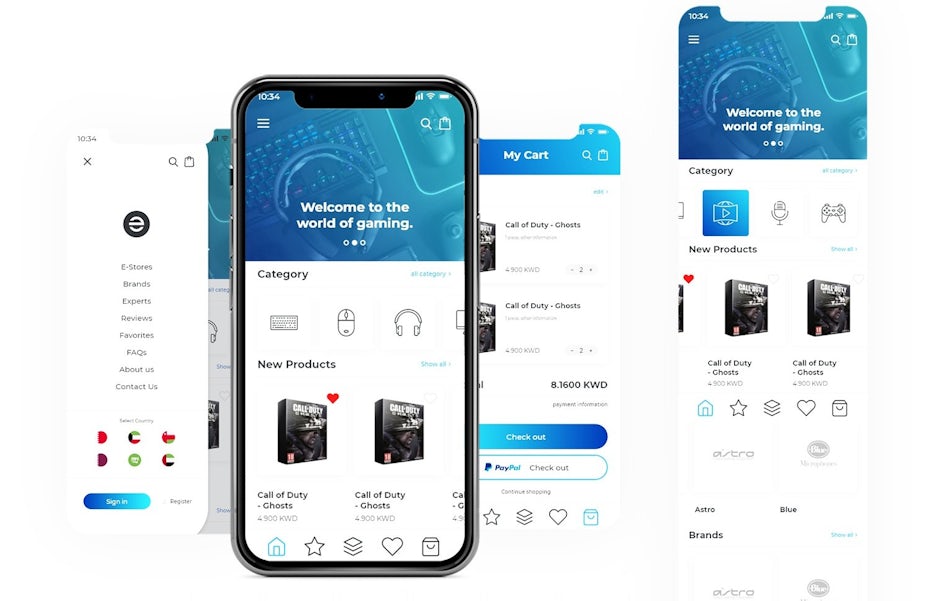Achieve Peak Performance with Data-Driven Mobile Optimization
Achieve Peak Performance with Data-Driven Mobile Optimization
Blog Article

The Ultimate Overview to Mobile Optimization: Strategies for Enhancing Website Efficiency on Smartphones and Tablets
The methods for improving web site efficiency on mobile systems go past simple adaptation; they encompass a detailed approach that entails receptive style, rate optimization, web content approaches, and customer experience improvements. By diving right into the details of mobile optimization, organizations can not only meet individual assumptions but additionally remain ahead in an affordable digital landscape.
Importance of Mobile Optimization
Mobile optimization plays a pivotal function in enhancing customer experience and driving conversion prices in the ever-evolving digital landscape. With the increasing use smart devices and tablet computers for searching the internet, making certain that web sites are maximized for mobile phones has become important for services - Mobile Optimization. A mobile-optimized web site not just adapts flawlessly to different screen sizes but likewise loads swiftly, supplying users with a smooth and pleasurable searching experience
In today's hectic globe, customers anticipate instant accessibility to info on the go. A site that is not maximized for smart phones dangers shedding prospective consumers due to reduce packing times or a poor individual interface. By buying mobile optimization, businesses can deal with the requirements of their mobile target market, leading to higher involvement and boosted conversions.
In addition, internet search engine like Google prioritize mobile-friendly web sites in their positions, making mobile optimization vital for boosting visibility and attracting natural web traffic. Mobile Optimization. Overall, the significance of mobile optimization can not be overstated, as it straight influences individual fulfillment, conversion prices, and total business success in the digital world
Responsive Layout Techniques
Executing receptive style methods guarantees that sites dynamically adjust their layout and content based upon the customer's tool display dimension, supplying a constant user experience across various platforms. Among one of the most typical techniques utilized in responsive design is developing fluid grids that enable material to resize proportionally to the display dimension. This makes sure that aspects on the website preserve their family member spacing and arrangement, optimizing the watching experience for customers on different devices.
In addition, using flexible pictures that can scale with the dimension of the viewport helps prevent pictures from being cropped or distorted on smaller sized screens. CSS media questions play an essential function in receptive design by allowing programmers to apply specific designs based on the tool features such as display size, height, and alignment. By leveraging media inquiries, sites can adapt their layout and style to suit mobile phones, tablet computers, and desktop displays perfectly.
Including responsive style techniques not just enhances individual experience yet additionally adds to boosted online search engine positions, as online search engine like Google focus on mobile-friendly sites in their mobile search engine result. By embracing receptive layout, websites can provide to the varied needs of individuals accessing web content on a range of gadgets, inevitably driving engagement and conversions.
Speed and Performance Optimization

One trick technique is optimizing photos and multimedia material to decrease file dimensions without jeopardizing top quality. Compressing photos, leveraging modern picture formats like WebP, and careless filling offscreen pictures browse this site are effective techniques to accelerate lots times (Mobile Optimization). Additionally, reducing HTTP demands, leveraging browser caching, and reducing web server response times are critical actions in boosting efficiency.
Applying a content shipment network (CDN) can also substantially boost web site rate by distributing material throughout multiple web servers internationally, decreasing latency for customers accessing the site from different locations. Focusing on critical above-the-fold material and deferring non-essential manuscripts can additionally boost perceived performance. By focusing on rate and efficiency optimization, websites can provide a smooth and satisfying user experience on mobile phones.
Mobile-Friendly Material Techniques
To optimize material for smart phones, it is important to prioritize readability and useful content interaction via strategic formatting and concise messaging. Mobile-friendly material methods include customizing the discussion of details to match the smaller sized displays and on-the-go nature of smart device and tablet computer users. One key aspect is to ensure that text is quickly understandable without the requirement for zooming in, utilizing font sizes that are readable on mobile displays. Furthermore, damaging up material into shorter paragraphs and using bullet points can help boost readability and make it less complicated for customers to eat details promptly.
Including appealing visuals, such as images and video clips maximized for mobile watching, can additionally improve the general user experience. These visuals need to be relevant, high-grade, and tons rapidly to avoid customers from losing passion. Integrating interactive components like quizzes, surveys, or surveys can improve individual involvement and motivate energetic involvement.
Customer Experience Enhancements
Building on the structure of mobile-friendly content strategies, boosting user experience requires maximizing every touchpoint to make sure smooth communication and contentment for mobile customers. One important element of boosting customer experience on mobile tools is making certain fast loading times.
Maximizing kinds for mobile individuals by reducing the number of areas and using additional reading auto-fill functions can also boost the general user experience. By concentrating on these customer experience enhancements, sites can properly involve and preserve mobile visitors.
Conclusion
In verdict, mobile optimization is critical for boosting site efficiency on smartphones and tablets. By carrying out receptive layout strategies, enhancing speed and efficiency, creating mobile-friendly web content, and improving customer experience, companies can effectively get to and involve with their mobile target market. It is necessary for websites to adjust to the enhancing mobile usage patterns in order to continue to be competitive in the electronic landscape.
Report this page